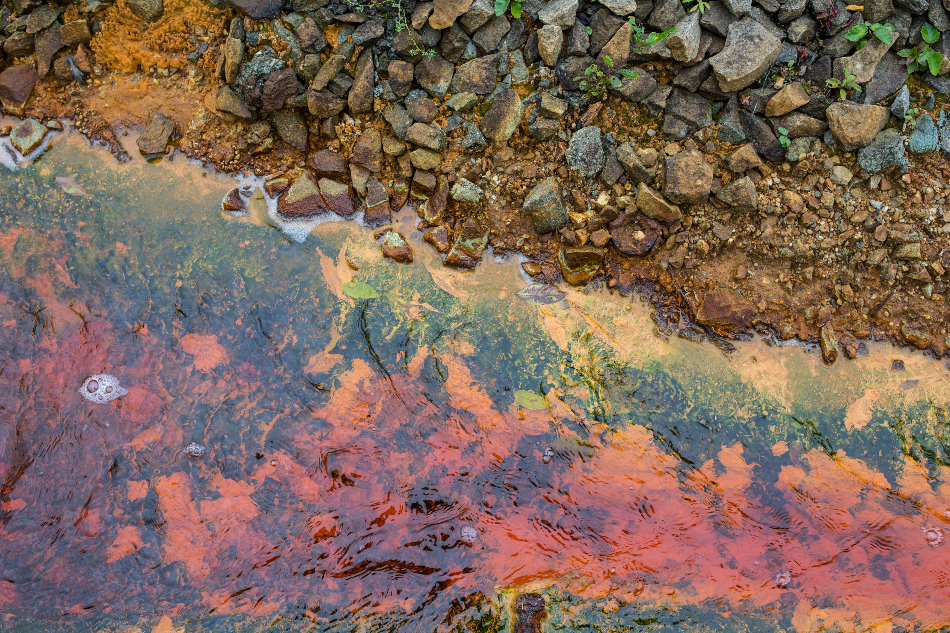
Martchan / Shutterstock
Different sampling techniques have been applied for evaluating both organic and inorganic pollutants present within the environment. Unfortunately, the widespread distribution of chemical species present within water, soil, and other environmental media can complicate the ability to obtain accurate measurements of these pollutants. To combat these challenges, thin-film technology has proven to be a highly valuable technology in identifying pollutants, particularly those originating from mining sources.
Traditional Sampling Techniques
The two main techniques that have traditionally been used to evaluate and identify the presence of pollution within the environment include grab and passive sampling.
Grab sampling, for example, is commonly used to assess and quantify the micropollutants that might be present in aquatic environments. While this technique is inexpensive and simple to achieve, it has certain limitations, including the requirement for a large volume of water to be used during the sampling as well as an overall lack of temporal representativeness.
Passive sampling has also been a widely used technique that is complementary to grab sampling. When using this sampling technique, passive samplers are used to concentrate specified compounds of interest that are found within the environment. Some commonly used passive samplers for the evaluation of organic contaminants within water supplies include Polar Organic Chemical Integrative Sampler (POCIS) and Semi-Permeable Membrane Device (SPMD).
Unfortunately, passive sampling has certain limitations including expensive and time-consuming calibrations. Additionally, environmental factors such as high temperatures, water flow velocity, and biofouling can also adversely affect passive sampling procedures.
Diffusive Gradients in Thin-films Technique
Diffusive gradient thin films (DGT) technology has been utilized as a passive sampling device for several decades. The methodology behind DGT technology is based on measuring the soluble metals that diffuse through a filter and accumulate onto a binding agent, which is typically a hydrogel diffusive layer. DGT is typically designed to only bind to specific species of interest, allowing researchers to control the sampling rate of contaminants to the device while simultaneously obtaining highly accurate measurements. Initial DGT samplers were previously limited to only heavy metals and inorganic pollutants; however, recent advancements have also allowed for DGT to be adapted to the sampling of organic compounds.
Identifying Mining Pollutants
Throughout a mining project, different pollutants can be released and ultimately allowed to contaminate the surrounding environment. Some of the major, and often highly toxic pollutants associated with mining processes include acids, heavy metals like arsenic, cobalt, copper, cadmium, and lead, organic pollutants including dioxin-like compounds such as polychlorinated dibenzo-p-dioxins, polychlorinated biphenyls (PCBs) and polyhalogenated aromatic hydrocarbons (PHAHs), and inorganic compounds like toxic metals, sulfate, and radionuclide ions.
DGT can assess and quantify the presence of such contaminants in a wide range of sample types that may have been contaminated by several different causes. In terms of mining pollution assessment, one recent study utilized DGT devices to test three different mine tailings of varying acidity levels that range from an acidic pH of 3 up to a neutral pH of 7.2. These mine tailings contained high concentrations of bioavailable, and heavy metals including lead, zinc, palladium, and copper. Although the researchers of this study found that the presence of other cations in high concentrations can affect the ability of the DGT devices to accurately measure metal concentrations, these thin films were useful and promising tools for mining pollution assessment, even when the samples are present in a highly acidic environment.
Sources
- Guibal, R., Buzier, R., Lissalde, S., & Guibaud, G. (2019). Adaptation of diffusive gradients in thin films technique to sample organic pollutants in the environment: An overview of o-DGT passive samplers. Science of The Total Environment 693. DOI: 10/1016/j.scitotenv.2019.07.343.
- Davison, W., & Zhang, H. (1994). In situ speciation measurements of trace components in natural waters using thin-film gels. Nature 367; 546-548. DOI: 10.1038/367546a0.
- Bondarenko, A., Sani, D., & Ruello, M. L. (2011). Design and Calibration of an Organic Diffusive Probe to Extend the Diffusion Gradient Technique to Organic Pollutants. International Journal of Environmental Research and Public Health 8(8); 3318-3332. DOI: 10.3390/ijerph8083318.
- “Mining and Water Pollution” – Safe Drinking Water Foundation
- Etale, A., & Mhlanga, S. (2016). Mobility and Transformation of Inorganic Contaminants in Mining-impacted Groundwater.
- Conesa, H. M., Schulin, R., & Nowack, B. (2010). Suitability of using diffusive gradient sin thin films (DGT) to study metal bioavailability in mine tailings: possibilities and constraints. Environmental Science and Pollution Research 17(3); 657-664. DOI: 10.1007/s11356-009-0254-x.
Disclaimer: The views expressed here are those of the author expressed in their private capacity and do not necessarily represent the views of AZoM.com Limited T/A AZoNetwork the owner and operator of this website. This disclaimer forms part of the Terms and conditions of use of this website.